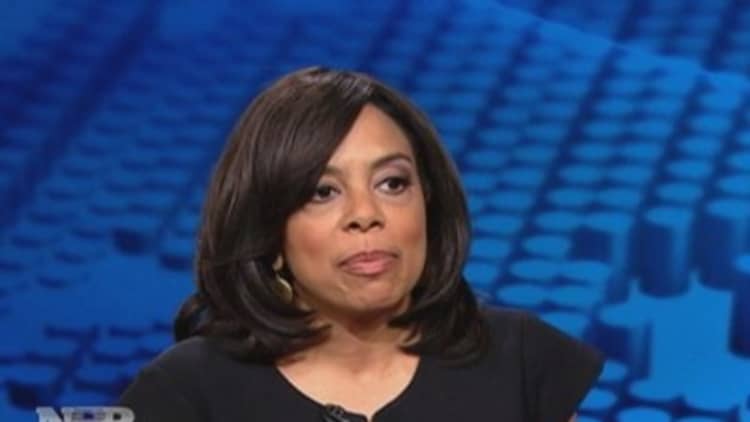
College students will pay more to borrow from the government. Why? Blame increased Treasury yields.
Most federal student loans are pegged to the yield on the 10-year note that is set at Treasury's final auction each May. At that important auction Wednesday, the yield on the 10-year U.S. Treasury note was set at 2.61 percent.
Read MoreTreasury official: College should be cheaper
The 10-year note has risen 80 basis points since last May's auction. And that's the change that counts when it comes to federal student loan rates.
Since rates have gone up since last year, federal student loan rates were bound to go up as well. The new rates will go into effect on July 1.
Can't pay your tuition? Blame Uncle Sam
Here's what you need to know:
How much will rates go up on federal student loans?
The most widely borrowed loans are Stafford loans, whose rates will climb to 4.66 percent in the 2014-2015 school year, up from 3.86 percent this year.
Stafford loans for graduate students will rise to 6.21 percent, from 5.41 percent in 2013-2014
PLUS loans for graduate students or for parents paying their child's college costs will increase to 7.21 percent, from 6.41 percent.
Read MoreBair: Important money lessons to teach your kids
How much more will the borrowers have to pay each month?
It's really not a huge change compared to the rate they're paying this year—and the monthly impact will be minimal.
"For each $10,000 in federal student loan debt, the borrower will pay about $4 more per month, based on a 10-year repayment period," said Mark Kantrowitz, publisher of Edvisors.com, which operates several college financing websites.
The good news is these new federal loan rates are fixed for the life of the loan, Kantrowitz said. Also, if the borrower falls on hard times or has a low income, they can opt for an income-driven plan that ties monthly payment to income. Most of these income-driven plans require you to make regular payments over 10 to 20 years, but after that, the unpaid balance is forgiven. Private student loans don't offer those options, notes Kantrowitz.
Read MoreIs your child college bound? How do you pay for it?
Since federal student loan rates are rising, does it make more sense to take out more private loans?
Most borrowers should still seek out federal loans first. On average, Stafford loans are generally going to be less expensive over time than private student loans.
Sallie Mae, the largest lender of private student loans, says its fixed rates on loans for undergrads range from 5.75 percent to 12.875 percent. Variable rates on its private student loans can be as low as 2.25 percent, but these rates can and will fluctuate and can top 10 percent.
Sallie Mae agrees that borrowers should tap federal student loans first and recommends a "1-2-3 approach" to paying for college: First, explore scholarships and grants and use savings and income. Second, explore federal loans; third, fill the gap with a responsible private education loan.
If you have retirement questions, email me at yourmoney@cnbc.com or tweet me at @sharon_epperson and use the #GetAPlan hashtag.


